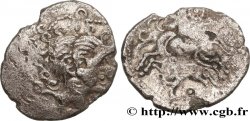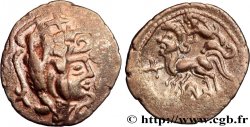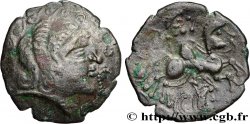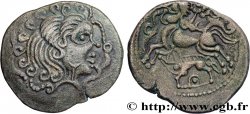v57_0446 - VENETI (Area of Vannes) Statère d'or à l'hippocampe - des Sablons
MONNAIES 57 (2013)
Starting price : 1 800.00 €
Estimate : 3 000.00 €
Realised price : 1 800.00 €
Number of bids : 1
Maximum bid : 3 150.00 €
Starting price : 1 800.00 €
Estimate : 3 000.00 €
Realised price : 1 800.00 €
Number of bids : 1
Maximum bid : 3 150.00 €
Type : Statère d'or à l'hippocampe - des Sablons
Date: c. 100-70 BC
Mint name / Town : Vannes (56)
Metal : gold
Diameter : 19,5 mm
Orientation dies : 6 h.
Weight : 7,32 g.
Rarity : R2
Coments on the condition:
Statère avec des types complets et bien centrés, mais sur un flan court, avec une frappe molle ou une usure marquée mais homogène. Agréable monnaie pour un type toujours plaisant en assez bon or
Predigree :
Cet exemplaire provient du fameux trésor des Sablons ; c’est le n° 107 de la vente du 27 mars 2001
Obverse
Obverse legend : ANÉPIGRAPHE.
Obverse description : Tête à droite, coiffée d'un hippocampe et entourée de cordons perlés auxquels sont attachées de petites têtes.
Reverse
Reverse legend : ANÉPIGRAPHE.
Reverse description : Cheval androcéphale à droite, l'aurige tient le stimulus ; devant le cheval, un vexillum ; génie ailé couché sous le cheval.
Commentary
Ce type de statère à l’hippocampe en cimier est probablement la monnaie armoricaine en or la plus mythique ! Ce type reste rare et manque à la plupart des musées et ne passe qu’exceptionnellement en vente. Selon le MONETA, quarante exemplaires sont néanmoins recensés ; cet exemplaire y est répertorié sous le n° 18.
Nous n’en avons eu que deux autres exemplaires ; MONNAIES IV n° 612 et 613.
Nous n’en avons eu que deux autres exemplaires ; MONNAIES IV n° 612 et 613.







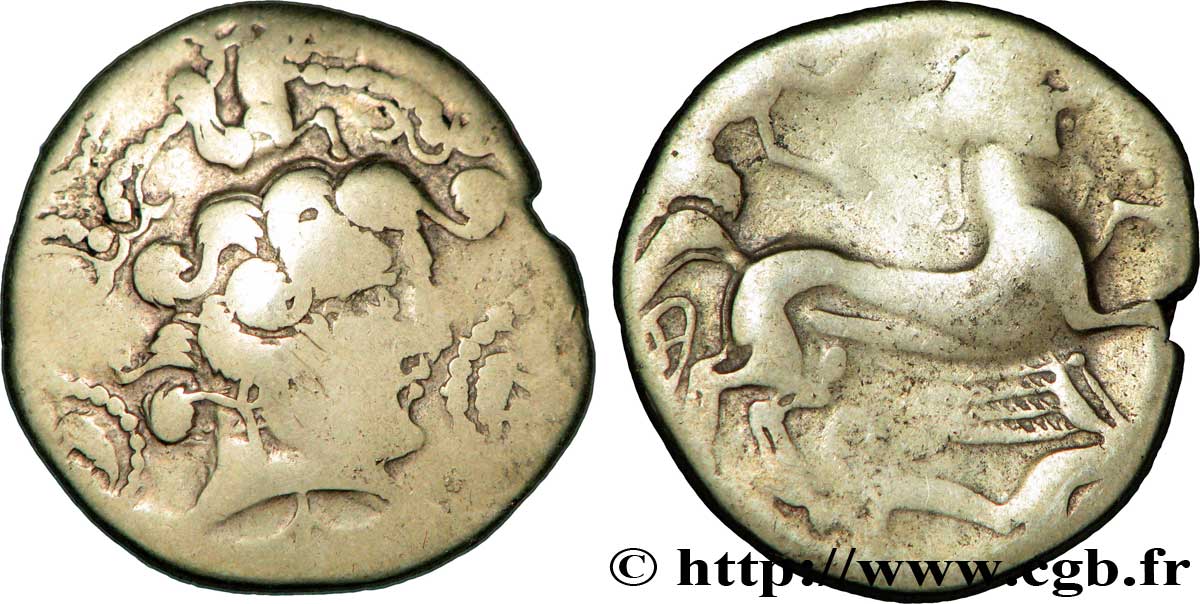
 Report a mistake
Report a mistake Print the page
Print the page Share my selection
Share my selection Ask a question
Ask a question Consign / sell
Consign / sell
 Full data
Full data
